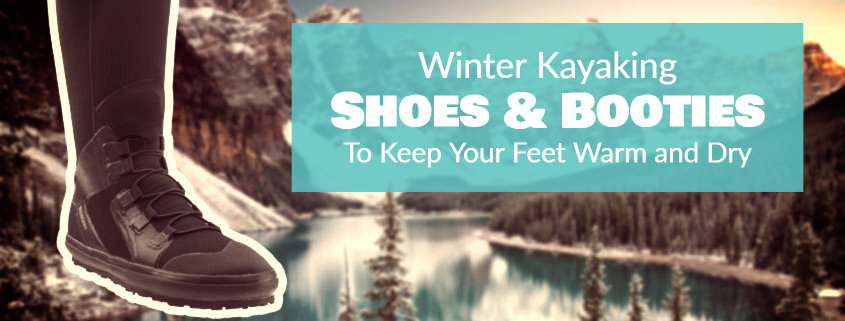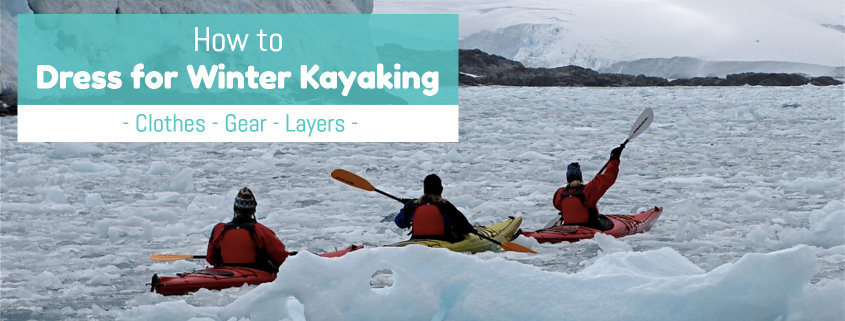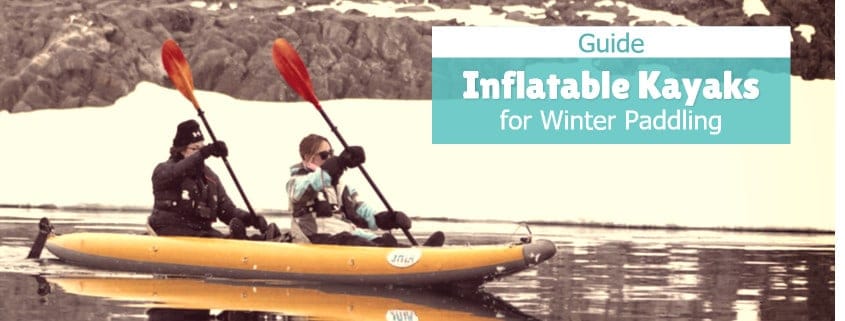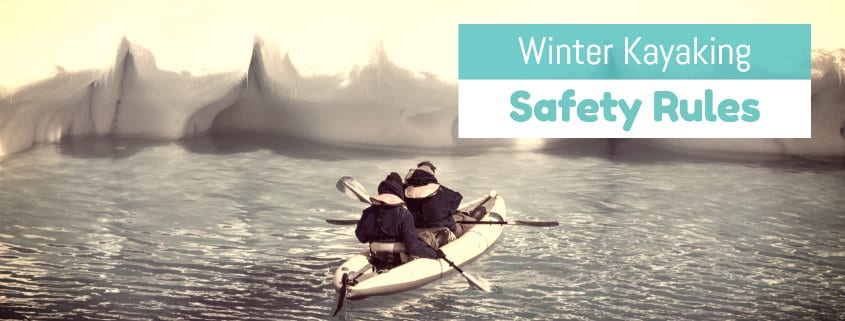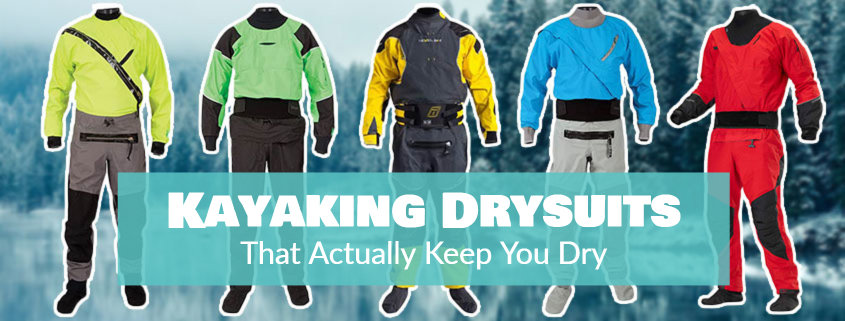Kayaking shoes/booties are different from ordinary footwear. They need to be light, flexible, provide good traction, and hard enough for launching and walking on sharp rocks and gravel. And of course, shoes made for winter kayaking also help keep your feet dry and warm in the cold.
In this article, I will help you find the perfect kayaking shoes for paddling in cold weather.
First I’ll list the best ones, then I’ll teach you how to choose a pair that is suitable for your needs.
Contents
Best Winter Kayaking Shoes & Boots in 2024
Here is a list of the top shoes and booties you can get for paddling in the cold.
| Image | Kayaking Shoe | Shoe Height | Details | |
|---|---|---|---|---|
| 1. | 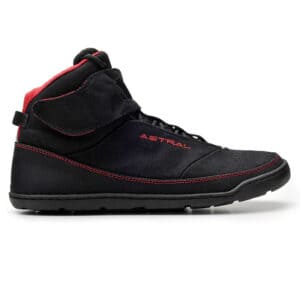 | Editor's Pick Astral Hiyak Water Shoes High-performance, great traction and insulation. | Ankle shoe | Details |
| 2. | 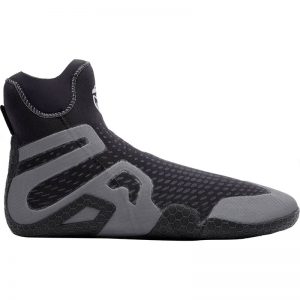 | 2nd choice NRS Freestyle Wetshoes Light, durable, 3mm neoprene upper. | Ankle shoe | Details |
| 3. | 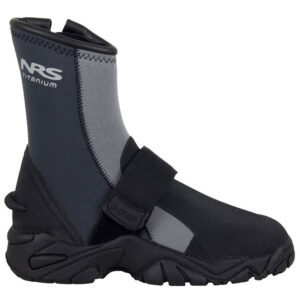 | NRS ATB Wetshoes Thick soles, zipped 5mm neoprene upper, velcro instep strap. | Ankle shoe | Details |
| 4. | 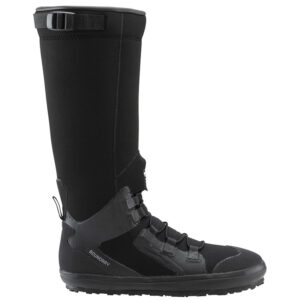 | NRS Boundary Boots Laced waterproof boots, 5mm neoprene, good soles. | Knee high boots | Details |
| 5. | 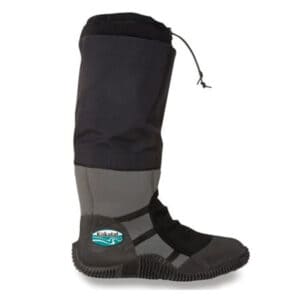 | Kokatat Nomad 3mm neoprene shoes with nylon waterproof shafts. | Knee high boots | Details |
| 6. | 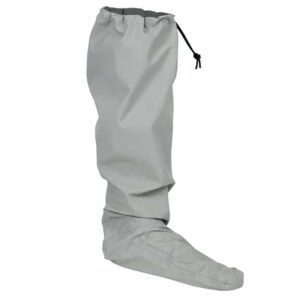 | Kokatat Hydrus 3.0 Launch Socks Dry feet without a dry suit. | Knee high | Details |
| 7. | 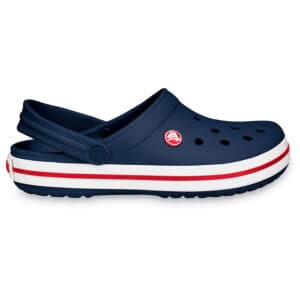 | Crocs Clogs To protect your dry socks in mild weather. | Low cut | Details |
Astral Hiyak Water Shoes
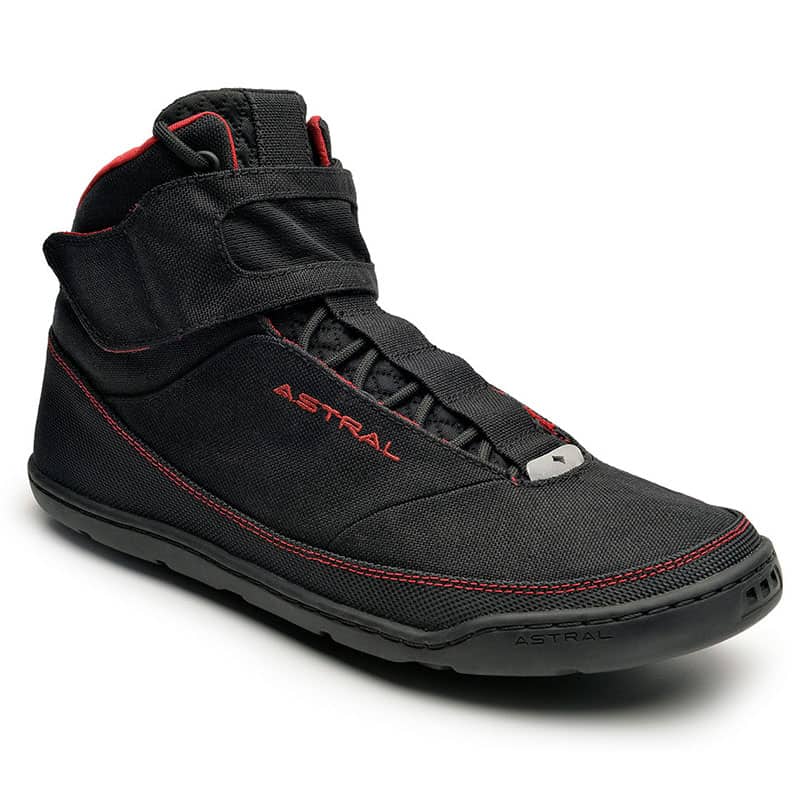
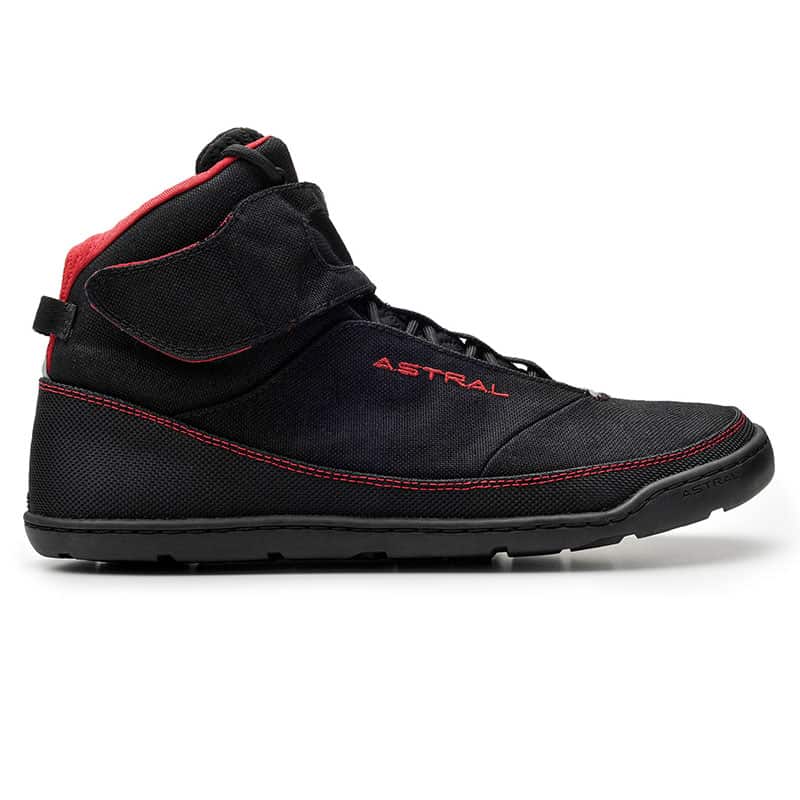
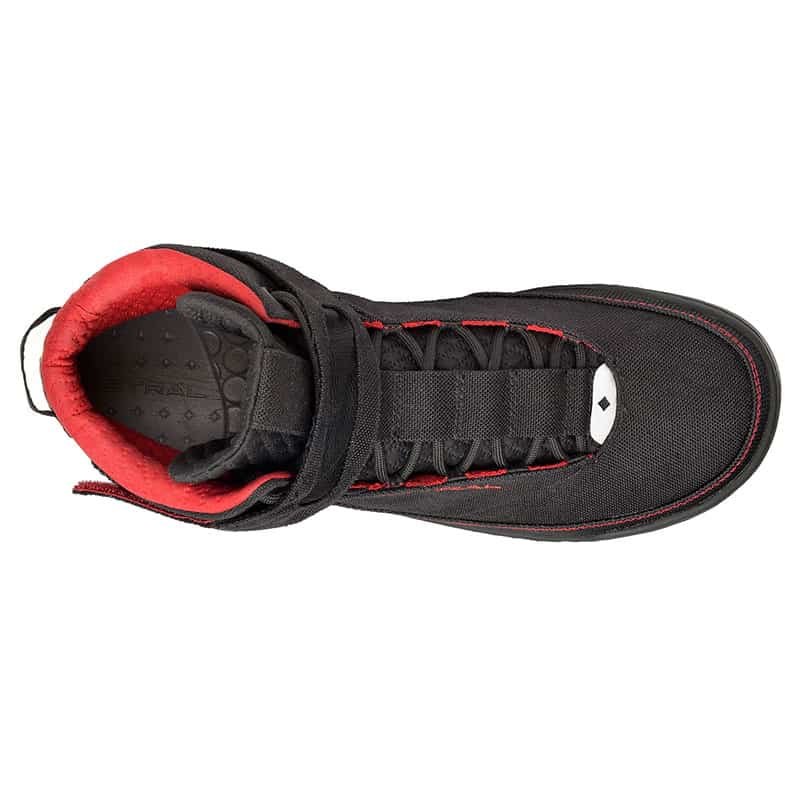
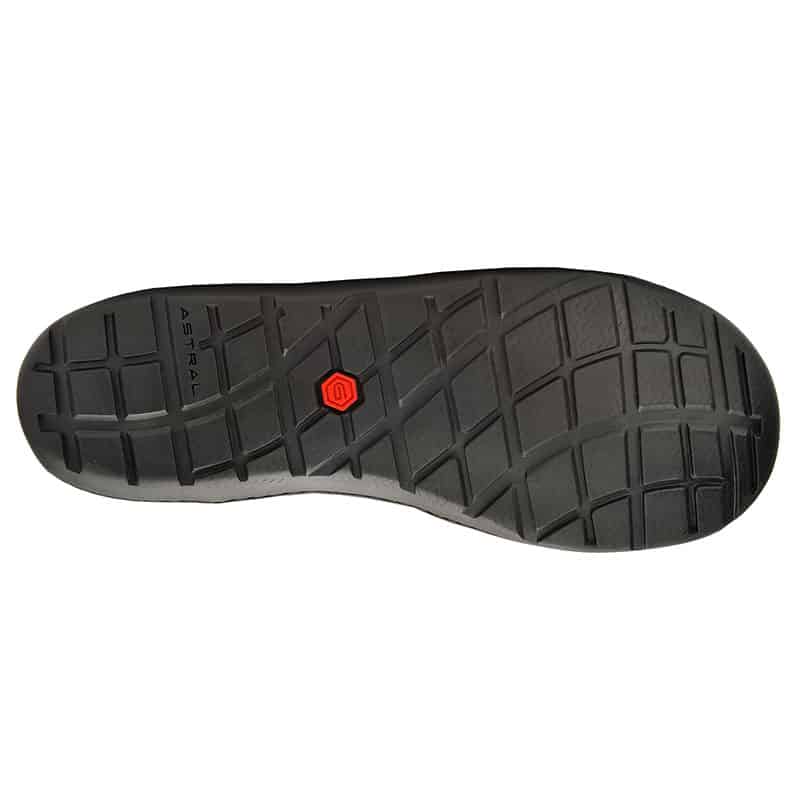
Pros
Cons
The Astral Hiyaks are high-performance water shoes that provide great traction and insulation.
The 3.5mm thick soles are very sticky, even on wet rocky surfaces. They are also low profile, so they fit nicely into kayaks, but they are made to provide support for walking/hiking as well.
This is one of the few kayaking shoes that provide good ankle protection, since they are not made of neoprene. Astral uses a proprietary fabric on the uppers to give it rigidity.
Also, these shoes use real laces, so you can tighten/loosen them as you like. And your laces won’t get snagged in anything or become undone in the water, since these shoes have a velcro overwrap that protects your loose lacing.
The toe box on the Hiyaks is wider than other wetshoes, so there is room for your toes, they will never cramp up. This is especially nice when wearing several layers of socks and drypants with drysocks.
In all honesty, these are probably the highest quality kayaking shoes you can buy. As you can expect, this shows on the price tag as well.
This is Astral’s new model of the Hiyak. Having worn both, I can say that they improved a lot. This model is:
- built better,
- warmer,
- more flexible and more comfortable than the previous model. Which was already good by the way.
The Astral Hiyak is only available in full sizes. If you are in-between sizes, you should probably size up. If you can find them that is, as they sell out often.

Astral Hiyak

Premium quality and features
Best winter kayaking shoe in 2024
The Astral Hiyak is my pick for the best water shoe you can buy for winter paddling. It is comfortable, warm, light, yet sturdy. The sole has great traction and is sticky so you don’t slip. The price is reflective of its quality…
Check today’s prices on:
Save 10% with this discount code at checkout on OutdoorPlay.com:
AV10
NRS Freestyle Wetshoes
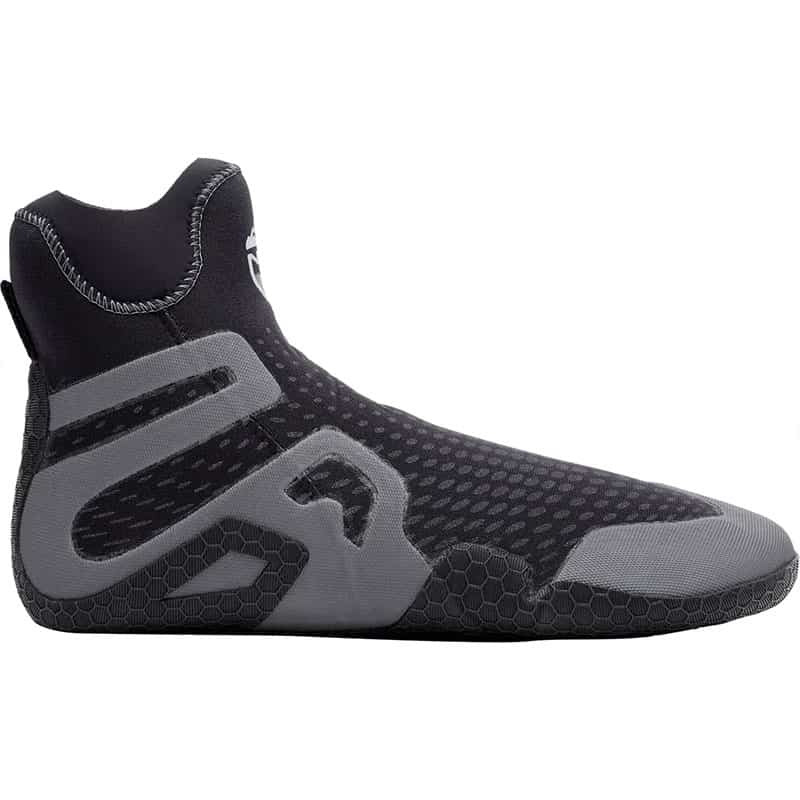
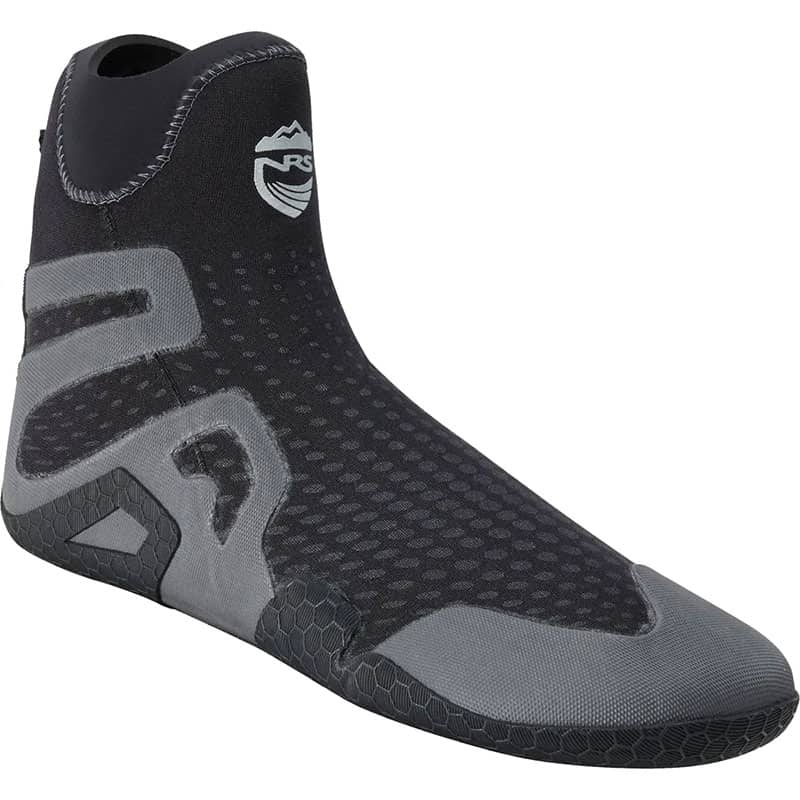
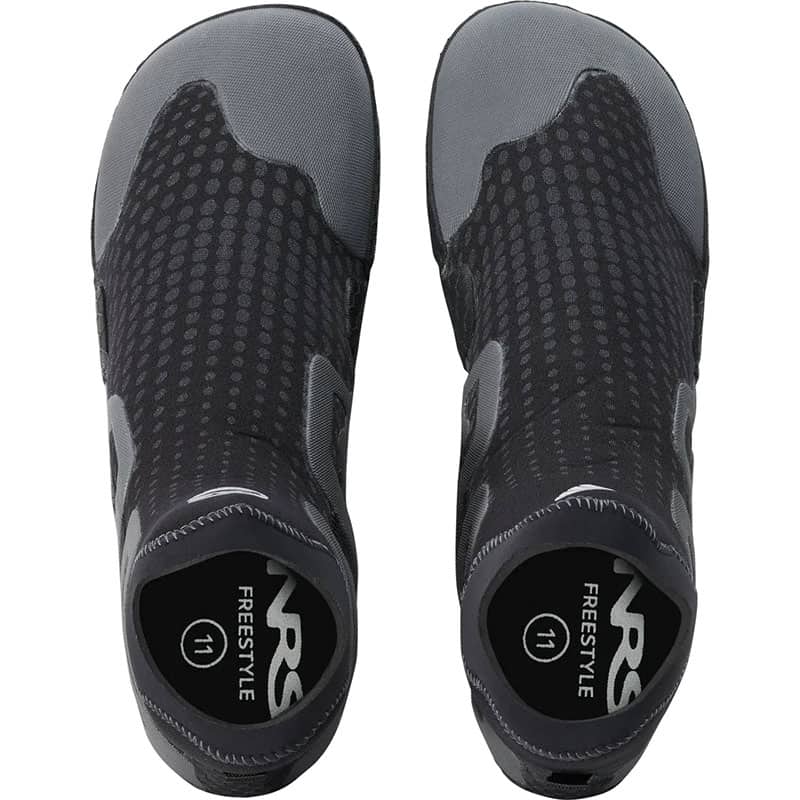

Pros
Cons
The NRS Freestyle wetshoes were redisegned in 2022.
They are a great choice for paddling in the cold, and they are also light yet durable, and also very comfortable.
The 1.5mm soles on these shoes are thick and flexible enough for light terrain but are still low profile, so you can wear them in kayaks of any size.
In fact, SUP paddlers love these wetshoes as well, since they come close to the feel of being barefoot, but still protect their feet from the elements like a wetshoe should.
They also have lateral rubber support bands to give your ankles more stability than what the neoprene would by itself. I mean it doesn’t turn them into hiking boots, but it does make them more stable.
They are nice and warm as well, thanks to the 3mm neoprene and the inner fleece lining. I might not use them in the coldest of conditions though, unless I wear several layers of socks underneath my drysocks.
Another great feature of the NRS Freestyle shoes is that the toebox is roomier than other shoes, so your toes are never squeezed together. Not even when you wear several layers of socks.
I think these shoes are a great choice in cold to mild weather, and they are sold at a great price.

NRS Freestyle

Light and comfortable
2nd choice
The NRS Freestyle wetshoes are very comfortable, you don’t even feel them thanks to their low profile sole. They are a bit trickier to put on than the Astral Hiyak and don’t hold your feet as well in rugged terrain, which is why it came in at 2nd place.
Check today’s prices on:
Save 10% with this discount code at checkout on OutdoorPlay.com:
AV10
NRS ATB Wetshoes 2023
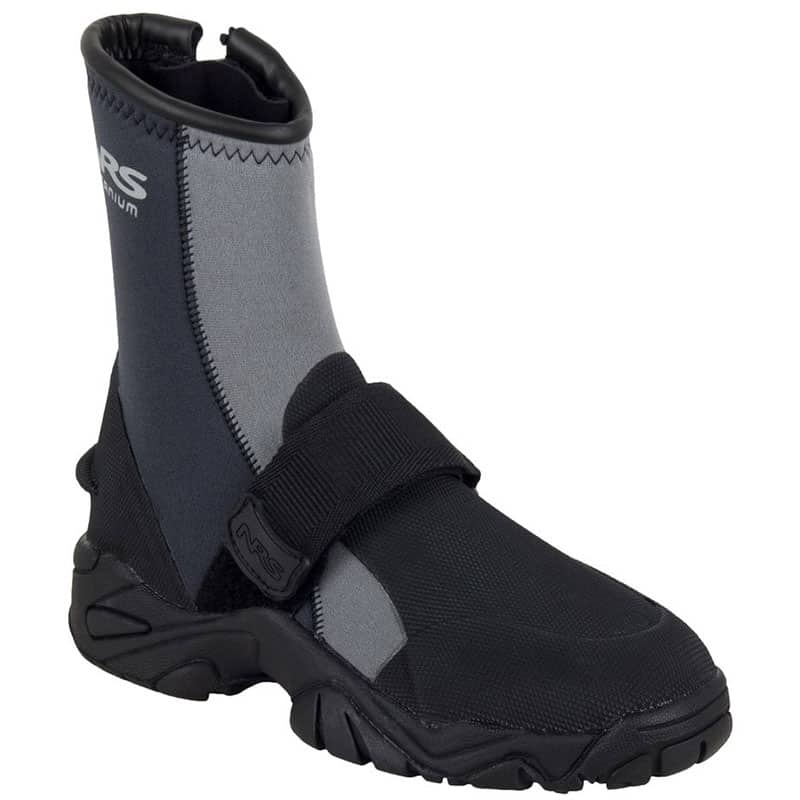
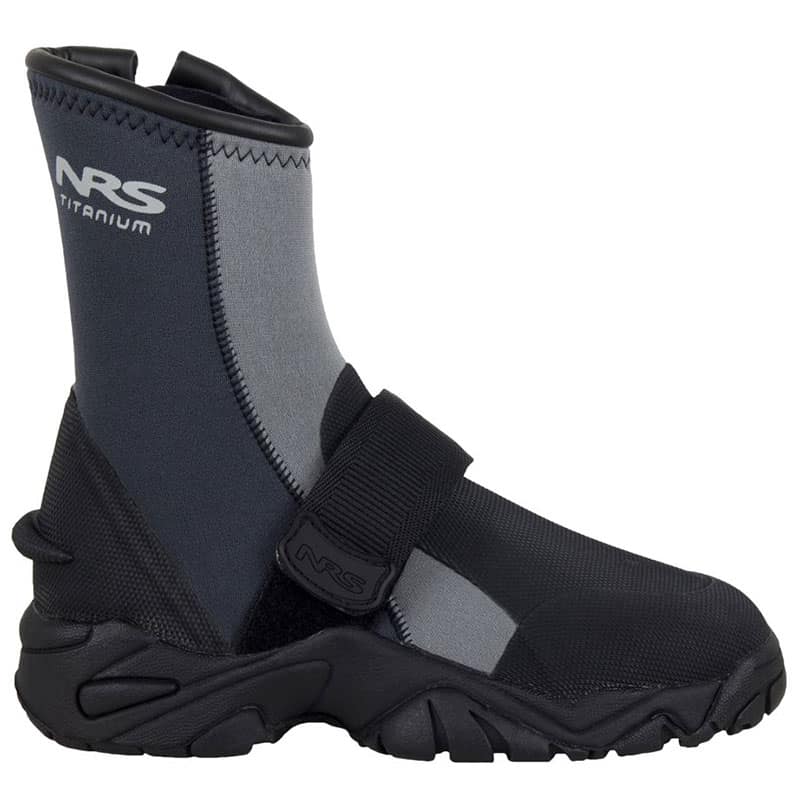
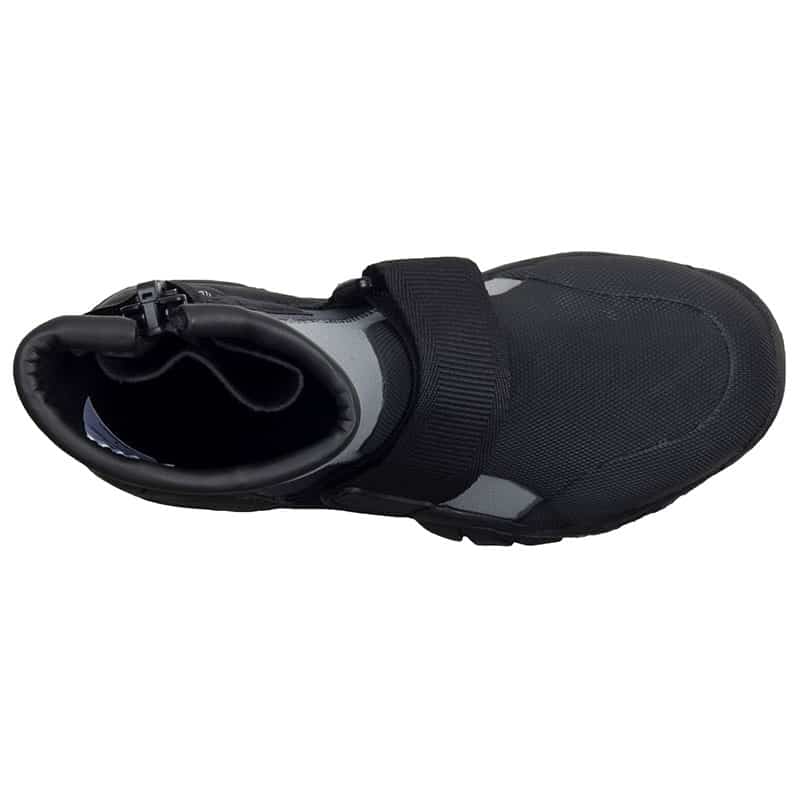
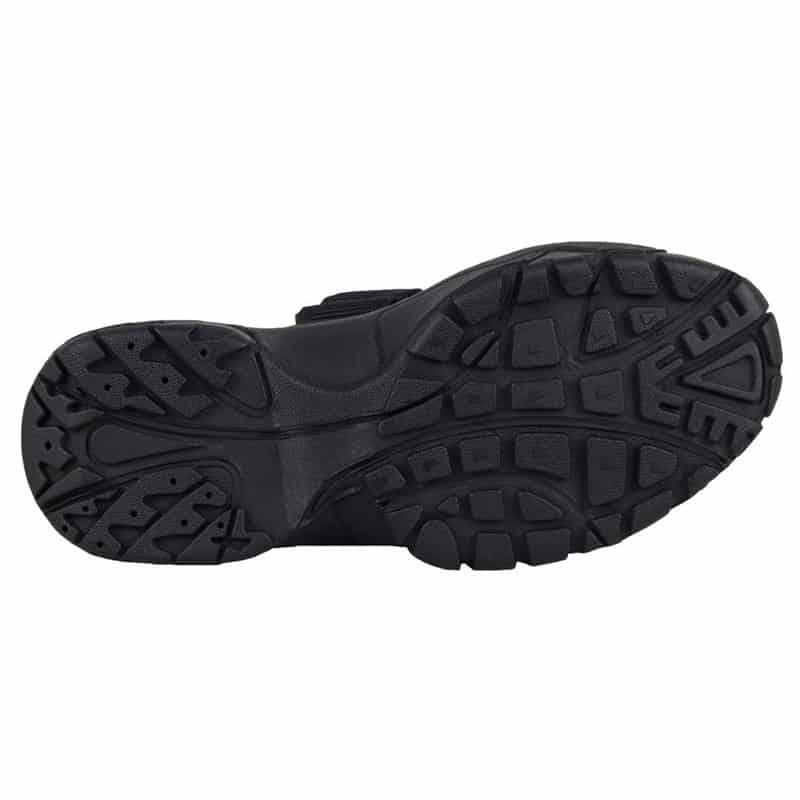
Pros
Cons
The NRS ATBs are ultra-rugged wetshoes you can use for kayaking if you plan on hiking on rough terrain as well. It was redesigned in 2023, and is more rugged than the previous model.
They have thick workboot soles that give your feet protection and reliable traction in the water and on land. They are great when you need to walk over sharp rocks, and perfectly protect your drysuit’s drysocks.
The shoes have 7mm neoprene insoles, which provide a nice cushion from any impact.
But this, of course, comes at the expense of extra bulkiness, something that is not ideal on simple kayaking trips where you won’t be hiking much. NRS also put a tab on the back for swimming fins. These are good if you need them, but if not, just add to the bulkiness of the shoes.
Don’t think the ATBs are proper hiking shoes though. The soles are rugged, but unlike hiking boots that are stiff at your ankles, there is nothing to protect you from spraining your ankles on rough terrain.
The ATBs keep your feet warm, thanks to the zippered 5mm neoprene upper. It is nice and tight once zipped up, so it keeps gravel out of the shoe.
They also have a rather wide instep strap that you can fasten with velcro. This keeps the shoe firm on your feet, never sliding around. It also lets you size up and layer as many socks underneath as you like, because you can adjust the strap to your foot.

NRS ATB 2023

Rugged
The NRS ATB wetshoes have thick soles for hiking on rough terrain. They are the most rugged wetshoes I know, but the large profile also means that they are bulky.
Check today’s prices on:
Save 10% with this discount code at checkout on OutdoorPlay.com:
AV10
NRS Boundary Boots
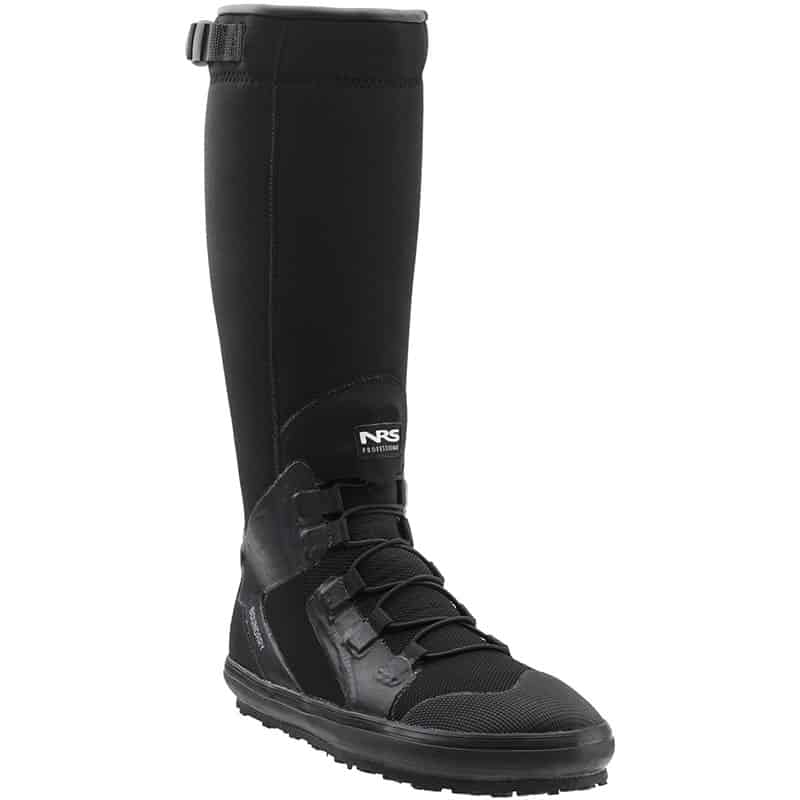

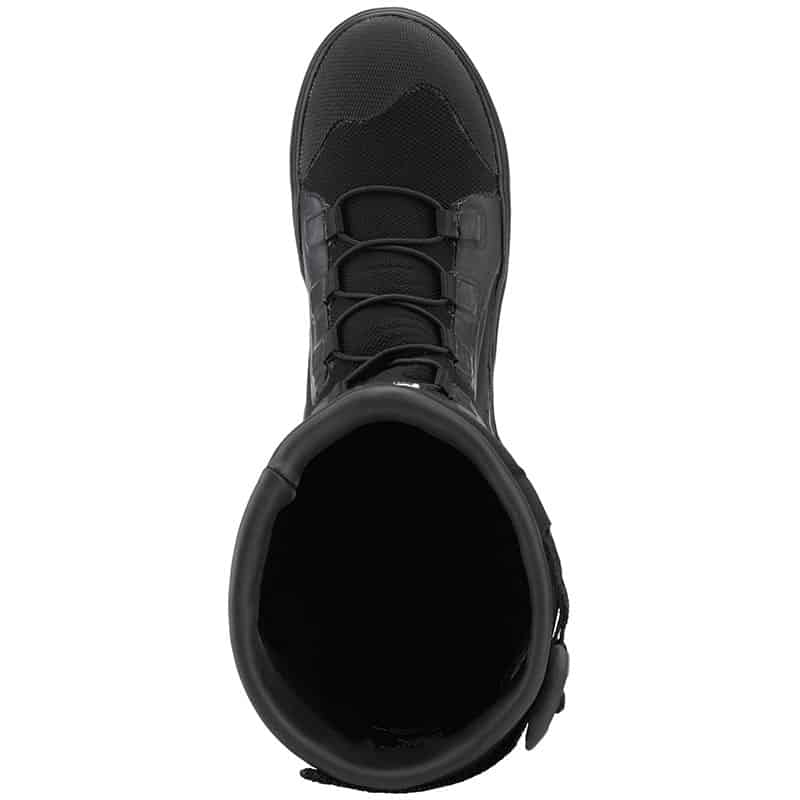
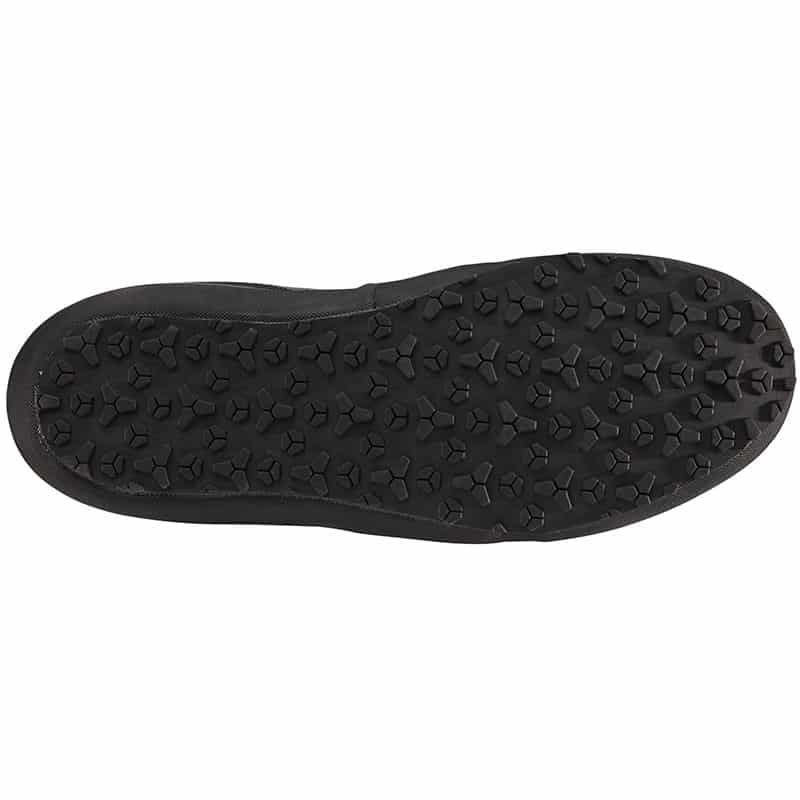
Pros
Cons
The Boundary Boots are knee-high (15” tall), waterproof boots that will keep your feet warm and dry. The upper is made out of 5mm neoprene, which makes it warm enough for winter paddling if you wear socks underneath. It is not overly warm by itself, so you can also use it during shoulder season.
Each boot is factory waterproof tested, so you know you won’t get any duds. The height of the boots makes it ideal for putting your kayak into knee-deep water, and if you need to get in-out often.
Here is a list of my favorite things about this boot:
- Glued, so it’s waterproof and there is no rub from hard stitches
- The lace adds to the stability of the boot. You can customize your fit, so your feet don’t slide around. The laces can be tucked away, so they don’t get caught in anything.
- The 3mm rubber sole is nice and sticky, it handles boat ramps and muddy rocks well safely
- The sole comes up onto the side of your foot to protect against underwater cliffs, oysters, etc.
As you can see, the boot itself is built with value-added features that all paddlers can appreciate. NRS really paid attention to the needs of kayakers and fishermen with this one.

NRS Boundary Boots

Laced waterproof boots
The NRS Boundary Boots are a great choice if you are looking for knee-high watershoes for the winter. They are laced for stability, have good soles, and the 5mm neoprene is just right.
Check today’s prices on:
Save 10% with this discount code at checkout on OutdoorPlay.com:
AV10
Kokatat Nomads
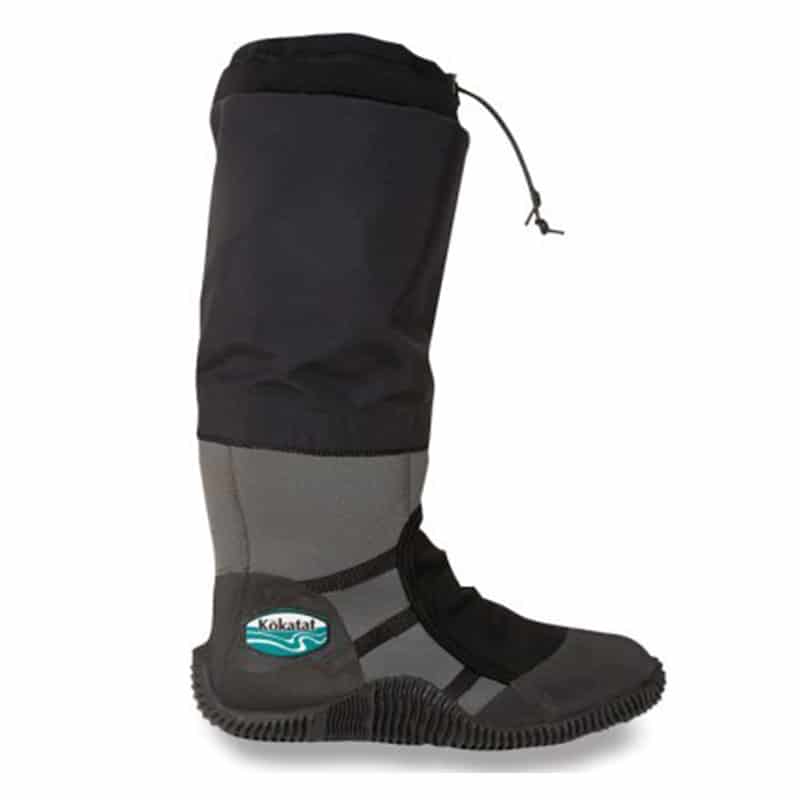
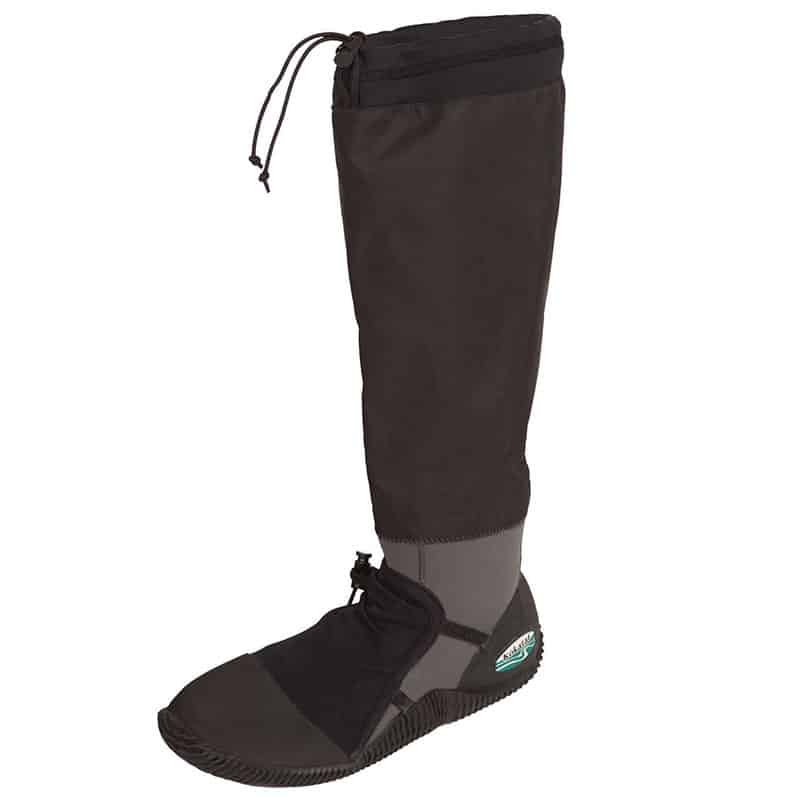
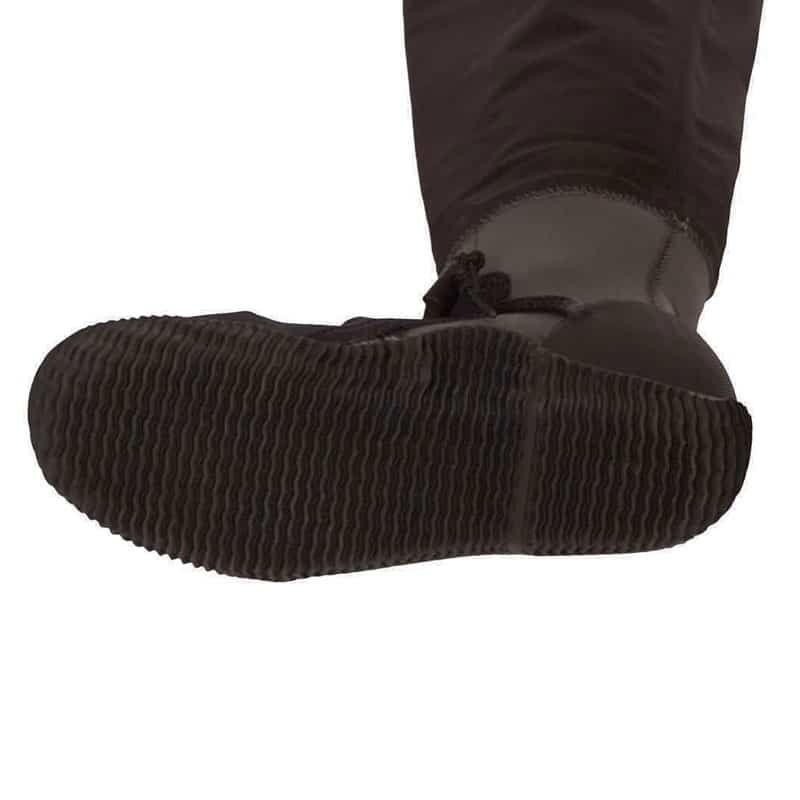
Pros
Cons
The Kokatat Nomads are waterproof boots ideal for kayak fishing, touring, and canoeing.
They are essentially a combination of 3mm neoprene shoes with nylon waterproof shafts. The shafts are ideal for launching your kayak.
You would think they might get in the way, but Kokatat was smart in making the shaft easy to fold down, so they can wear like a shoe. The shaft can also be folded under your drysuit legs, create a double fold.
There are 2 laces, one at the top of the shaft, and the other below your ankle. This lets you tighten and loosen the boots to make them comfortable with various layers of socks.
The Nomads are very light, they fold down nicely, so you can pack them away into your backpack. The soles are nice and sturdy, they provide excellent traction. They are low profile, not bulky at all. This makes it easy to get in and out of the kayak.
Paired with dive socks or 1-2 pairs of wool socks, your feet will stay dry and warm.
There are 2 negatives with the Nomads though.
First, if you go into deep water and your top shaft bungee is not tight enough, the boots can fill with water. Be mindful of this when you’re launching your kayak.
Second, the seam where the neoprene and nylon shaft are stitched together is rigid, which makes them harder to put on and take off than shoes that don’t have such a stitch at the ankle.

Kokatat Nomad

Waterproof boots
The Kokatat Nomads are versatile waterproof boots that can be folded down to wear like a shoe. Make sure you tighten the top bungee when you go into water though, otherwise they fill up easily.
Check today’s prices on:
Save 10% with this discount code at checkout on OutdoorPlay.com:
AV10
Kokatat Hydrus 3.0 Launch Socks
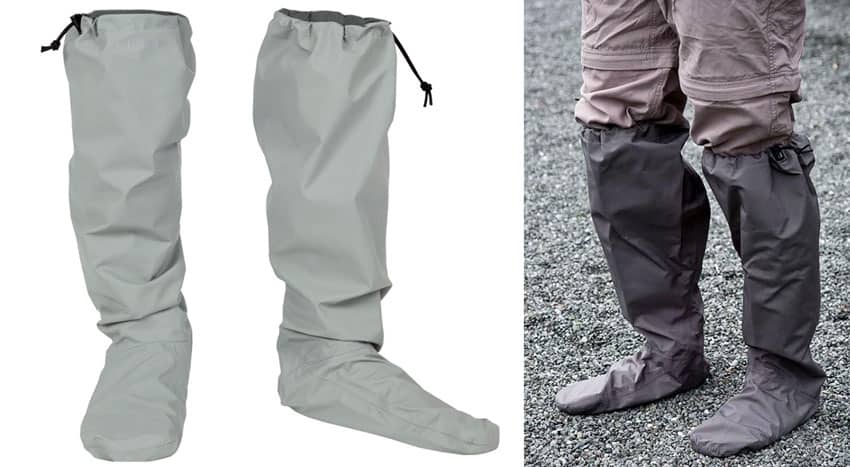
Pros
Cons
If you’re wearing a wetsuit (instead of a drysuit) but still want to keep your feet dry, you should get Kokatat’s Launch Socks.
They are made from Kokatat’s 3 layered breathable and waterproof Hydrus 3 material, which means that they do not let water in, but let your sweat out.
You should wear shoes or sandals over them, but the fabric is strong in itself. As I mentioned, it is Hydrus 3, the same fabric Kokatat uses for their drysuits.
The Launch Socks pull up to knee height and have a bungee cord at the top. The cord keeps the sock up at knee height, but is not a waterproof seal. You can wade into water with it, launch your boat, and not have to worry about keeping water out of your ankle-cut water shoes. They can be drenched, but your feet will stay dry with the Launch Socks.
They make multi-day kayaking trips very comfortable, since you won’t need to bring extra dry shoes. Just put your Launch Socks on, wear your regular wetshoes (or Crocs) over them, and your feet will still be dry.
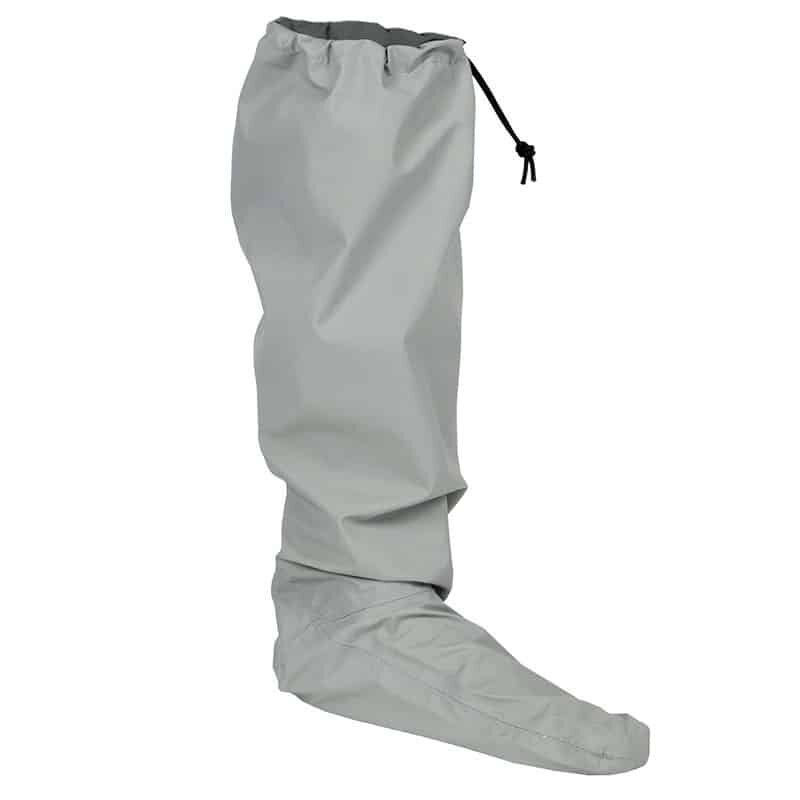
Kokatat Hydrus Launch Socks

Waterproof boots
The Kokatat Launch socks are made out of their Hydrus 3.0 material. They are waterproof and breathable and are a great choice if you’re not wearing a drysuit with integrated drysocks. It’s best to wear wetshoes over them, as they provide no traction.
Check today’s prices on:
Save 10% with this discount code at checkout on OutdoorPlay.com:
AV10
Crocs Sandals
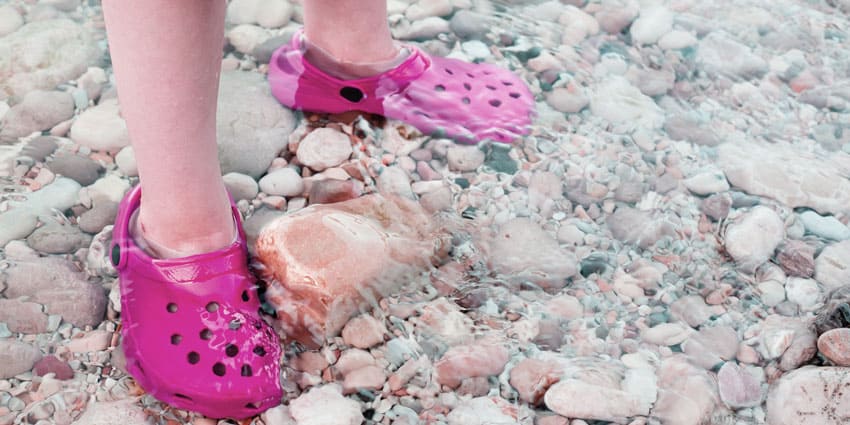
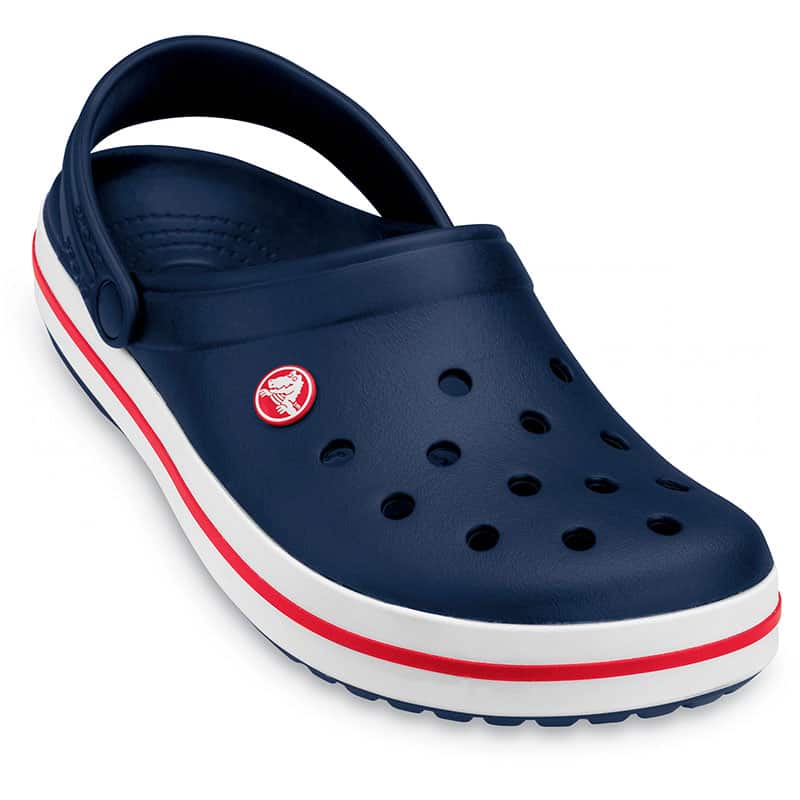
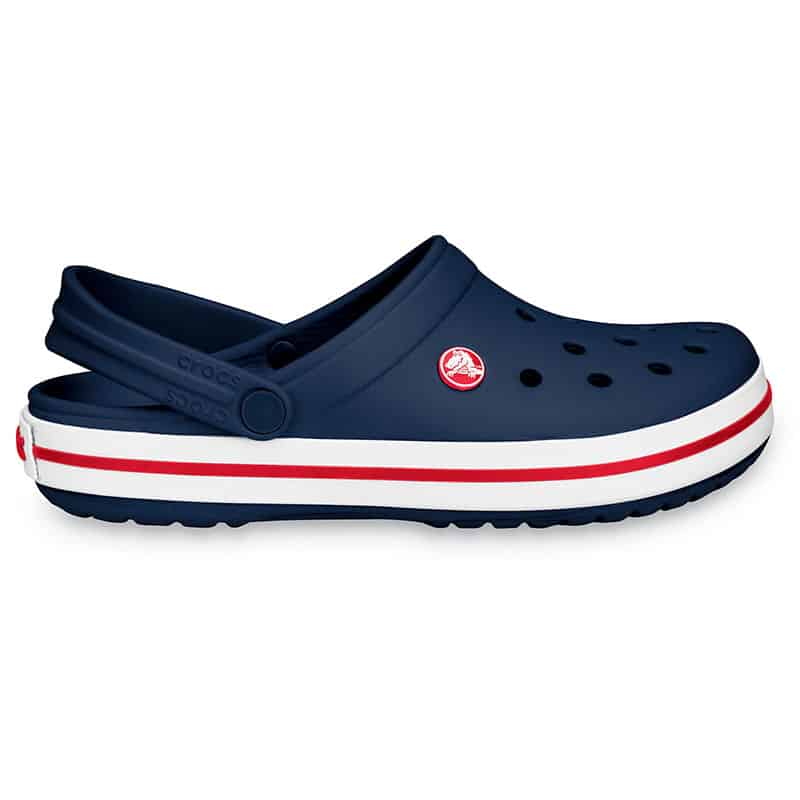
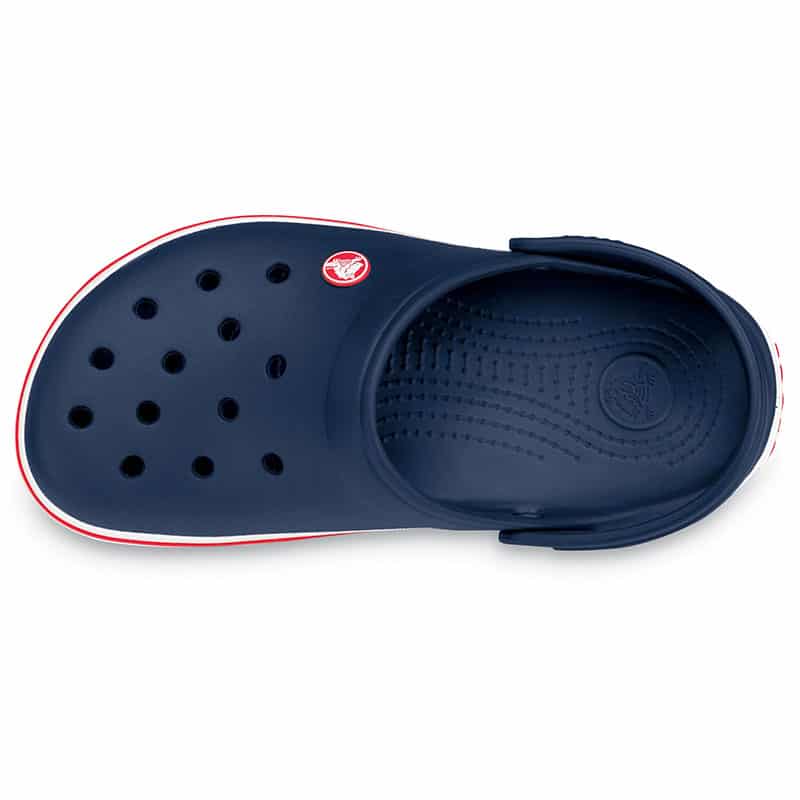
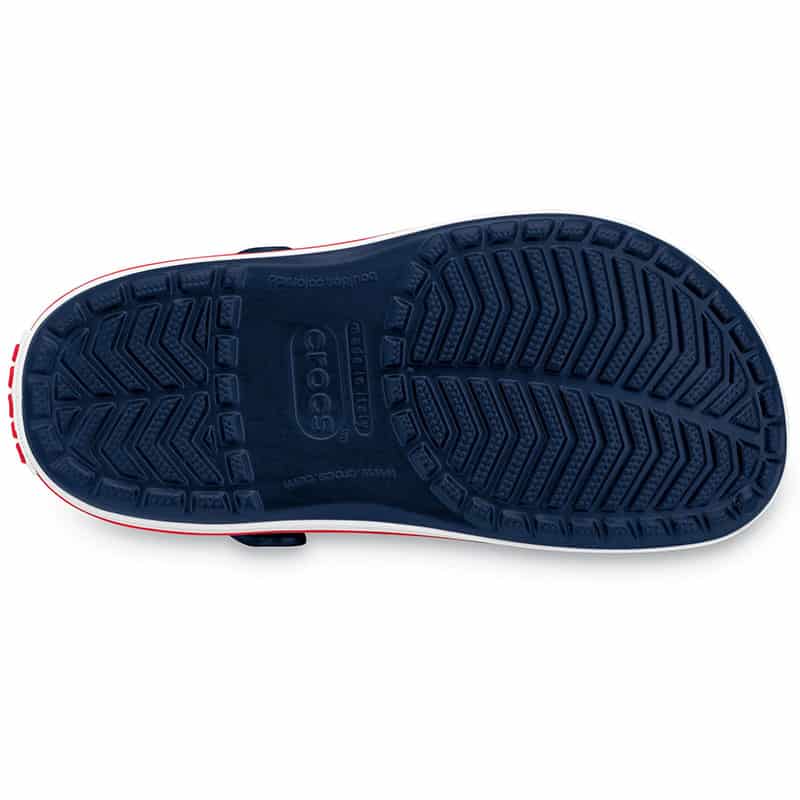
Pros
Cons
If the water is not super cold or you just don’t prefer wearing shoes in your boat, sandals can be an OK choice for kayaking. Crocs in particular, since they are:
- comfortable
- float
- dry quickly
- never smell
- and are easy to put on/take off whenever you wish.
Make sure you wear extra socks underneath to keep warm. You will want to get one size bigger than your normal size, that way they will fit even with 4 layers of wool socks.
There are a few compromises with Crocs though:
- They will protect the dry sock of your drysuit in the front, but not in the back where the strap is.
- They come off your foot easily when launching in muddy areas. Leave no Croc behind!
- Your heels might rub against the inside of the hull

Crocs Clogs

Simple
Crocs are a good choice for when it’s not too cold, or if you don’t like wearing wetshoes in your kayak. Just be mindful when launching, as they get stuck in mud underwater.
Check today’s prices on:
What kind of socks should you wear for winter kayaking?
If you go kayaking in cold water, you will want to wear socks to keep your feet warm. In fact, depending on water temperatures, you will probably need to wear several layers of socks.
The colder it gets, the more layers you’ll need.
I like wearing ski socks that come up to the knee. They go up into my suit legs and keep my lower legs warm as well. They also wick the water up, so my drysuit can breathe the moisture out.
You can choose between several sock fabrics:
- Don’t wear cotton socks. They soak up the water and dry slowly, making your feet cold if they get wet.
- Merino wool will keep you surprisingly warm if they get wet, so that’s a good choice of fabric.
- Polypropylene is probably the best choice. It keeps your foot warm even when it’s wet, doesn’t retain water much, and it dries quickly.
- Acrylic is almost as good as polypro.
How many layers of socks should you wear for kayaking in the cold?
In the shoulder season, you can go with 1 layer and your kayaking shoes.
But in the winter, you’ll need 2-4 pairs of socks, depending on their thickness.
How to choose the right kayaking shoes?
The shoes you wear kayaking is a very important part of your kayaking outfit, but you can’t just select any shoes for the activity.
Let’s have a look at the main characteristics of kayaking shoes, so you can decide what you need to take into considerations for your kayaking trips.
The right temperature for your feet
When buying kayaking shoes, you will notice that the thickness of the material varies greatly.
For kayaking in cold water, you will need thick neoprene shoes made of at least 4-5 mm neoprene. They are cut at the ankle or knee to provide extra warmth for your feet and legs.
You still need to wear 1-4 layers of socks under your shoes, but the neoprene really helps to keep your feet warm.
Paddling in warmer waters, you would need fewer layers of socks or thinner shoes made of neoprene mesh, or even sandals.
Remember that during kayaking, it is easier to cool your feet down than to warm them up.
The terrain
There is more to consider than just the temperature of the water, you should plan for the terrain you will walk on.
It could be a rocky ride or a muddy adventure, you may find yourself riding above the sand, pebbles, or more.
There are various types of terrain, and selecting suitable shoes goes a long way in keeping your comfortable and safe.
- Walking in pebbles and sandy areas would require tall, closed shoes. Getting pebbles in your shoes is very uncomfortable, and you don’t want to deal with taking your shoes off to empty them each time you step out of your kayak.
- If you are going to an area that has jagged rocks, a pair of shoes with thicker soles is your best choice.
- Moss and water can create slippery surfaces. If you are not careful, you may injure yourself slipping. Look for shoes with grippy soles and good tread for proper traction. You will find yourself in slippery conditions a lot, so you should pick your shoes wisely.
If you like to kayak in diverse locations. Choosing the right shoe might be more difficult. After all, you will probably face all the challenges we discussed here.
If you can’t buy 2 pairs of kayaking shoes, think about which terrain you visit the most, and get a pair of suitable shoes for those conditions.
Remember that you can wear multiple layers of socks to adjust to water temperatures, but you will need to size up so you have room in your shoes.
The material of the shoe
The most common material used to make kayaking shoes is neoprene.
It is a flexible material that:
- does not slip easily
- is lightweight
- keeps you warm
These qualities make it the perfect material for kayaking.
Manufacturers now combine other materials to make water shoes suitable for different activities. For example, a blending in polyester makes the shoe more durable, or using lycra increases the flexibility of the shoes.
If you have to choose between the two, you should look for a durable shoe over a flexible one.
The soles of your shoe
You need a shoe that offers good traction and protection when you go kayaking, so taking a good look at the soles of the shoes is important.
The sole is usually made out of durable rubber of various thicknesses. The thicker the sole, the better it is on sharp rocks, but the more rigid it becomes.
You will find some shoes will have hole at the bottom of the soles to help drain water, which lets them dry quicker.
Important!
No matter what type of design you choose, don’t go for an open-toe design. Any open area of your feet is vulnerable to injury underwater.
Kayaking shoe height
There are three shoe heights available: low cut, ankle height, and knee cut.
Low-cut shoes
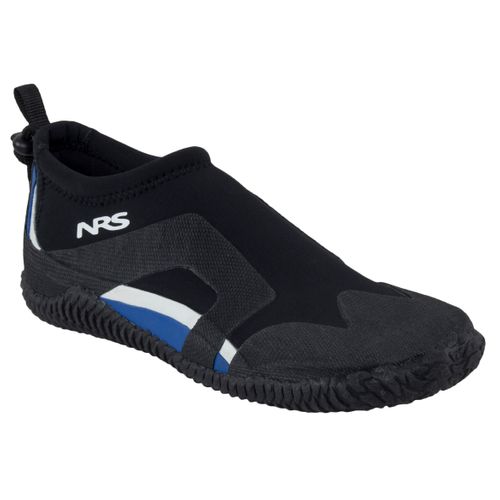
These are extremely flexible and comfortable.
They are made out of thin neoprene, so it is easier to move around wearing them. They don’t provide enough warmth in cold water though.
Ankle shoes
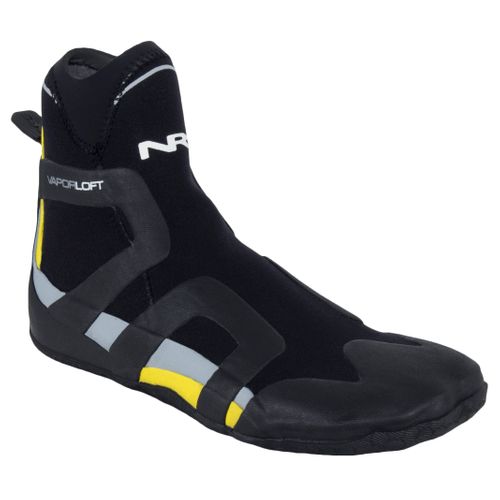
These are warmer than low-cut kayak shoes, and they also provide better protection for your feet. You can use them in warm or cold weather, so if you can only buy 1 type, it’s best to buy low-profile ankle shoes.
Knee height
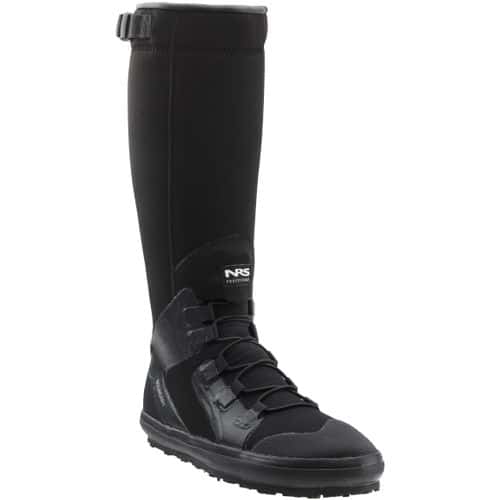
For extreme cold water paddling, these are the shoes you want. They are mostly waterproof and keep your feet warm during your trip. However, if you don’t fit them well, they may fill with water from the top if you fall into the water.
Kayaking shoe profile/bulkiness
The profile of your kayaking shoes means how bulky they are.
Low profile shoes are the best way to go, since:
- they make getting in and out of your kayaking easier
- they fit into low volume playboats as well
There are compromises to be made though. If you need thick soles, the profile of the shoes will get bigger, but this makes getting in and out harder, and you may find it difficult to fit in your footholds.
Some kayakers even choose to wear normal boots kayaking. I don’t like wearing boots paddling though, since they make entering/exiting the kayaking uncomfortable. Normal boots are not made for submersion, so you run into real problems if they go underwater.
What size kayaking wet shoes do you need?
For winter kayaking shoes, I’ve found that it is best to either size up if you’re between sizes, or just get 1 size larger than you normally wear to allow space for socks and drypant socks.
After layering your socks, your kayaking shoes should be snug compared to the everyday shoes you wear. Imagine the shoes being similar to socks or gloves.
Getting the size of your kayaking shoes right is important. Shoes that are too tight will cause cramps and restrain blood flow. Loose shoes will fill with water, and your feet slide around in them when walking. This can even be dangerous on sharp rocks.
When you get your shoes, put them on and see if you can stretch your toes and feet comfortably, but not be too loose. Keep in mind that neoprene is a flexible material, and it will expand a bit in the water.
Some brands of shoes run large, some run small. This means it’s important you try the shoes on before putting them to the test in the water.
Should you order kayaking shoes online?
When you order your shoes online, you can get a better deal and more choices than going into a brick & mortar shop.
You may not get the size right though, which is why it’s important to order form a shop that has a no-hassle return policy.
Outdoorplay.com has shoes from all kayaking brands, their prices are low, and this 10% coupon makes the price even sweeter: AV10
If the shoes are too tight or too loose, just exchange them for a different size.
Amazon is also a good choice, but Outdoorplay is cheaper with the coupon.

